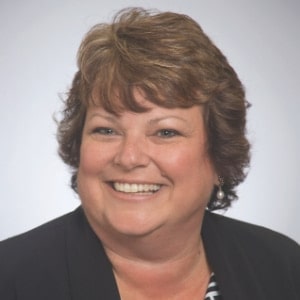Medical Coverage for Trauma-Related Dental Services

Many dentists are asked to submit dental procedures to the patient’s medical plan, either by the dental payer or the patient.
When asked if a practice submits medical claims it is not uncommon for the response to be “no, we do not submit medical claims for dental billing and we have no desire to start.” Or, the practice says, “we do not do any procedures that have to be submitted to medical.”
This reasoning may not be true and is instead a lack of dental manager resources in regards to medical coverage for trauma-related dental services.
Trauma is the number one reason a dentist will submit a medical claim. Most dentists provide services related to trauma; sometimes just an evaluation, or other times to repair a fractured tooth. Patients experience falls and sports-related accidents, which can necessitate dental treatment.
It may seem like submitting these medical claims will derail your dental billing, but that doesn’t have to be the case. Let’s find out how.
Medical coverage for dental trauma
When submitting a dental claim for trauma-related dental services, you must indicate in box 45 of the 2012 ADA Dental Claim Form that the treatment provided is due to an accident. This is often overlooked because computer software by default will leave these boxes blank, requiring these questions to be answered manually.
It is inappropriate to submit a dental claim without disclosing to the payer that the services are accident-related. If paid, without disclosure of the accident, the dentist may be receiving benefits they are not entitled to receive.
Medical payers have specific criteria and definitions for dental trauma. Each payer’s policy varies regarding the verbiage, but all outline in some way that dental procedures necessary as a result of “accidental external traumatic injury to a sound tooth” will be covered.
A sound tooth is further defined by medical policies as being one free of decay or periodontal disease and functional at the time of injury. Most policies further clarify that this does not include teeth cracked or broken by chewing or biting.
This is important to note when reporting ICD-10-CM diagnosis codes. It is inappropriate to report a diagnosis code describing a tooth broken due to trauma when the tooth was, in fact, damaged by chewing or biting.
Teeth lost or damaged due to trauma are considered medical in nature by most dental payers, and any available medical insurance is considered to be primary to the patient’s dental insurance. The medical explanation of benefits (EOB) should be submitted with the dental claim. Each payer has a policy on what types of procedures are allowed, and coverage is plan-specific.
Procedures typically reimbursed by medical payers include those listed below:
• Examinations
• Diagnostic radiographs
• Restorations, including crowns, to repair chipped or broken teeth
• Stabilization of avulsed teeth
• Endodontic treatment when required as a direct result of the traumatic injury
In addition, some payers also allow reimbursement for dental implants required to replace teeth lost due to trauma. While rare, some medical plans allow reimbursement for damage to dentures due to an external injury.
Traditional Medicare excludes dental treatment, even when due to trauma, such as a fractured tooth related to a fall. However, dental benefits may be available through some Medicare Advantage plans.
But all payers, including Medicare, agree that fractures of the jaw are considered medical in nature. In this case, medical insurance is filed as primary to dental insurance, which would then be filed as secondary. Here’s more on this matter.
Fractures of the jaw
There are multiple types of fractures, but all are described as either closed (i.e., simple) or open (i.e., complex).
A closed fracture is one in which the fractured bone has not pierced the skin. In an open fracture, the bone has broken through the skin. An open fracture may sometimes be immediately recognized, in that the bone is protruding through a laceration in the skin. Other times, however, the bone may have retreated somewhat and is not immediately visible.
Clinical documentation should indicate whether the fracture is open or closed. When assigning a diagnosis, any fracture not documented as open is always reported as a closed fracture.
The procedure to repair a fractured bone is referred to as a reduction. In medical terminology, this simply means to restore the bone to its natural anatomical alignment.
When a fractured bone is manipulated into alignment without requiring a surgical incision, this is called a “closed reduction”. An open reduction is performed through one or more incisions and may also include the placement of screws, plates, or other devices to repair the fracture. With either method, a fixation device may be placed to stabilize the bone during healing.
Third party liability
Liability insurance is a policy which covers injury or damage caused by the insured to another person (i.e., the third party). This type of policy is often associated with auto liability insurance, but it also applies to homeowner’s liability insurance. Public venues such as restaurants, schools, and sporting arenas also typically carry liability insurance.
Dental practices often see patients with dental injuries sustained in an automobile accident or at a public venue. Treatment may be limited to an examination and possibly a restoration of a chipped tooth, but sometimes more extensive treatment is necessary. These could include multiple restorations and possibly extractions and dental implants.
Unlike dental and medical policies, liability policies typically do not have specific exclusions or limitations on dental procedures. Even so, it is often required that proposed treatments be submitted to the liability payer for prior approval.
Liability claims are always considered primary to any other coverage available. Typically, dental and medical payers will deny benefits when liability coverage is available and considered primary.
If claims are also filed to the patient’s dental and/or medical plans, it is important to report the liability coverage on the claim form. Failure to do so may result in an overpayment by the insurance payer.
Some states require providers to accept liability coverage as payment for their services. Always contact your state department of insurance to verify regulations pertaining to third party liability. Unless prohibited by existing PPO contracts, a dentist may treat patients on a self-pay basis.
Many dental practices choose to file claims to the liability carrier as a goodwill gesture, although not required. Often liability cases involve lengthy legal proceedings and payment can be delayed months or even years. A dental practice may choose to negotiate payment arrangements up front with the patient or the third party representative, but has no legal obligation to do so.
Success with medical coverage
Submitting medical claims it is not as complex as it may seem, nor will derail dental billing if done right.
Documentation is key to the successful submission of medical claims. The clinical notes must be clear and concise—including, but not limited to, the patient’s complaint(s), how the accident happened, and the dentist’s findings or lack thereof.
Utilizing this blog and AADOM‘s dental manager resources will help your practice achieve your goals. In fact, with medical coverage for trauma-related dental services, you can generate additional revenue for the practice while providing prompt quality care to patients. Some medical plans pay accident-related claims at 100 percent, without regard to a patient’s medical deductible.
Meet the Authors


Dr. Charles Blair is dentistry’s leading authority on insurance coding strategies, fee positioning, and strategic planning. A widely-read and highly respected author and publisher, he currently offers several publications, Coding with Confidence, Administration with Confidence, Medical Dental Cross Coding with Confidence, Insurance Solutions Newsletter, and Practice-Booster.com.
Dilaine Gloege is a coding and billing support specialist. She is currently Call Support Center supervisor for Dr. Charles Blair’s Insurance Solutions Newsletter and PracticeBooster.com and has helped thousands of practices with coding and insurance questions regarding medical and dental claims.
Dr. Blair’s 2018 edition of Medical Dental Cross Coding with Confidence manual is a must-have resource for dental manager’s resource for submitting medical claims. Visit his website to learn more.








